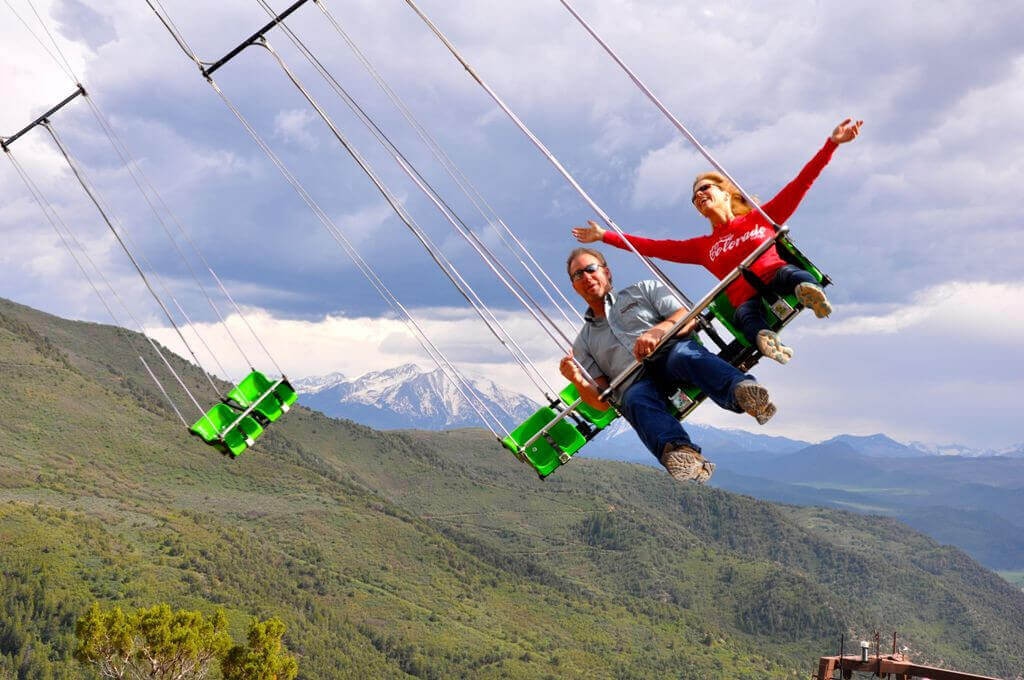Fascination About Aerial Adventure Course
Table of ContentsThe Main Principles Of Aerial Adventure Course The Ultimate Guide To Aerial Adventure CourseThe 8-Minute Rule for Aerial Adventure CourseThe Best Guide To Aerial Adventure Course
1. ZIP LINES A collection of cords, strung together at height, that individuals ride for a distinct aerial experience. These tours are normally guided. A zip line scenic tour in which all systems between zips lie at elevation, and also participants take a trip from system to system by means of zip lines as well as, perhaps, skies bridgeselements or barriers that are strung between two systems, which participants go across to link between two zip lines.
Photo credit report: Zip, Motorcyclist A standalone, single flight, as the name suggests. While zip line trips are relatively typical, any kind of attraction that has a zip line anywhere on property will probably profit from the term to increase recognitionwhether it is a summertime camp with a solitary zip line, or a multi-million dollar center in a significant traveler location.
The two can be used interchangeably. AERIAL EXPERIENCE PARKS A collection of barriers, strung in between trees, posts, or other vertical frameworks, created to supply a novel, above-the-ground physical difficulty for participants. Given that "airborne journey park" can be a bit of a mouthful, we commonly see it shortened to or, as it is in the title of this magazine (Aerial Adventure Course).
Aerial Adventure Course Fundamentals Explained
We aren't recommending you need to quit using that term, it simply may require extra explanation to your customer base. Aerial adventure parks are typically self-guided, with course monitors offered to supply pointers and help participants as needed. Displays might be found on the ground or at height. The safety tools, specifically the belay (safety add-on) system, differs substantially from park to park, as well as can be one of the greatest differentiating variables.
Picture credit: Outdoor Ventures Pole-based training courses might be built from wooden or steel posts. These depend on trees as main assistance frameworks. Often, some type of post or tower building improves tree-based courses. On these relatively typical formats, individuals merely take a trip from one route to the following, following a set path.
Known as European or Swiss layouts, these are configurations in which each route fans out from one central system, allowing try this website participants to choose their own level of trouble while optimizing throughput for the park. A popular version of this is a, in which a big tower structure, typically built of either wood or steel, is host to 2 or 3 systematized systems, each operating at various heights and equivalent degrees of difficulty.
Compact versions of this concept have a reasonably little impact, yet permit a high volume of participants. When set up in public places or open rooms, these deal an extremely various customer experience from a tree-based training course in a forest browse around here setting. Whatever the experience is, make certain to specify it for your individuals (Aerial Adventure Course).
Rumored Buzz on Aerial Adventure Course
Guests are commonly anticipated to run their very own belay system on an aerial experience park, so ease of use as well as redundancy are both critical aspects. Frequently described as "lobster claws," this system utilizes a harness and 2 belay lines that affix to a belay wire. Guests move themselves between platforms or aspects, as well as are advised to always contend the very least one line clipped in in all times.
This system offers terrific convenience of usage, but might make it harder for participants to pass one an additional, which could affect throughput. It additionally rather restricts style, and gets rid of much of the possession of the safety and security add-on process from individuals. Generally made use of on ropes programs (see listed below), the participant is connected to one end of a rope, while a facilitator or instructor is affixed to the other end.

In the meantime, allow's step away from the architectural interpretation, as well as concentrate entirely on a "traditional ropes course experience." Historically, ropes courses link have actually been utilized as a team-building tool for teams seeking a certain academic outcome, usually rotating around trust fund, interaction, leadership, or synergy. A "typical" ropes training course program typically involves some ground tasks in addition to both low ropes as well as high ropes challenges.
The Ultimate Guide To Aerial Adventure Course
These activities are practically never ever belayed, and introduce the extra component of participants taking responsibility for finding each other, basically stopping their peers or colleagues from hitting the ground. These aspects frequently look really similar to those discovered on airborne theme park, yet the challenges are typically developed as standalone tasks.
In a few situations, a high ropes course may include a static belay, where individuals make use of some type of self-belay, just like aerial parks. Commonly made use of interchangeably with "ropes course," this term defines the type of experience without the ties to (or complication with) the climbing up structure - Aerial Adventure Course. Obviously, "ropes course" is frequently used to specify the framework on which participants climb, which use will continue to be typical regardless of any kind of efforts to the contrary.